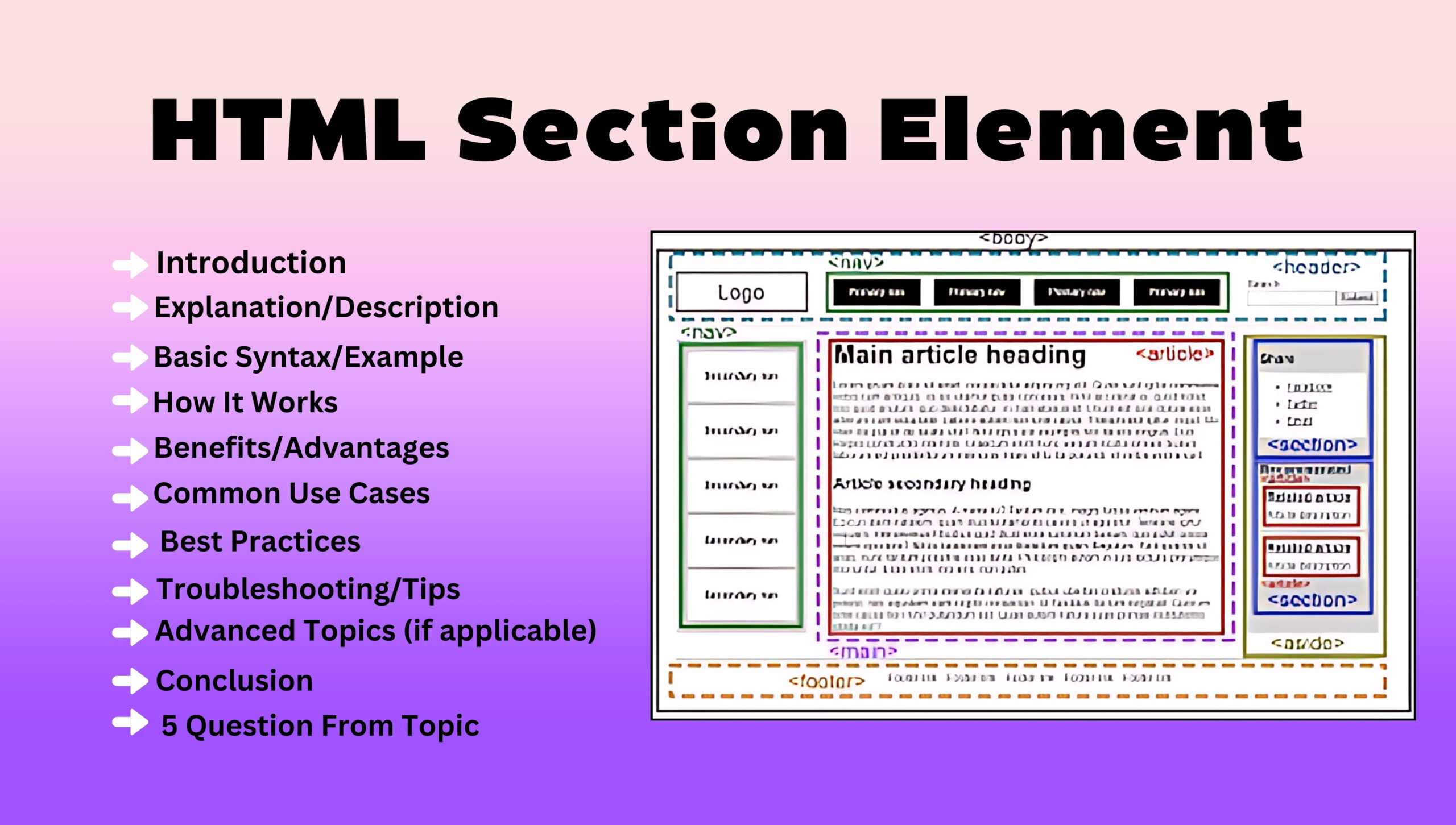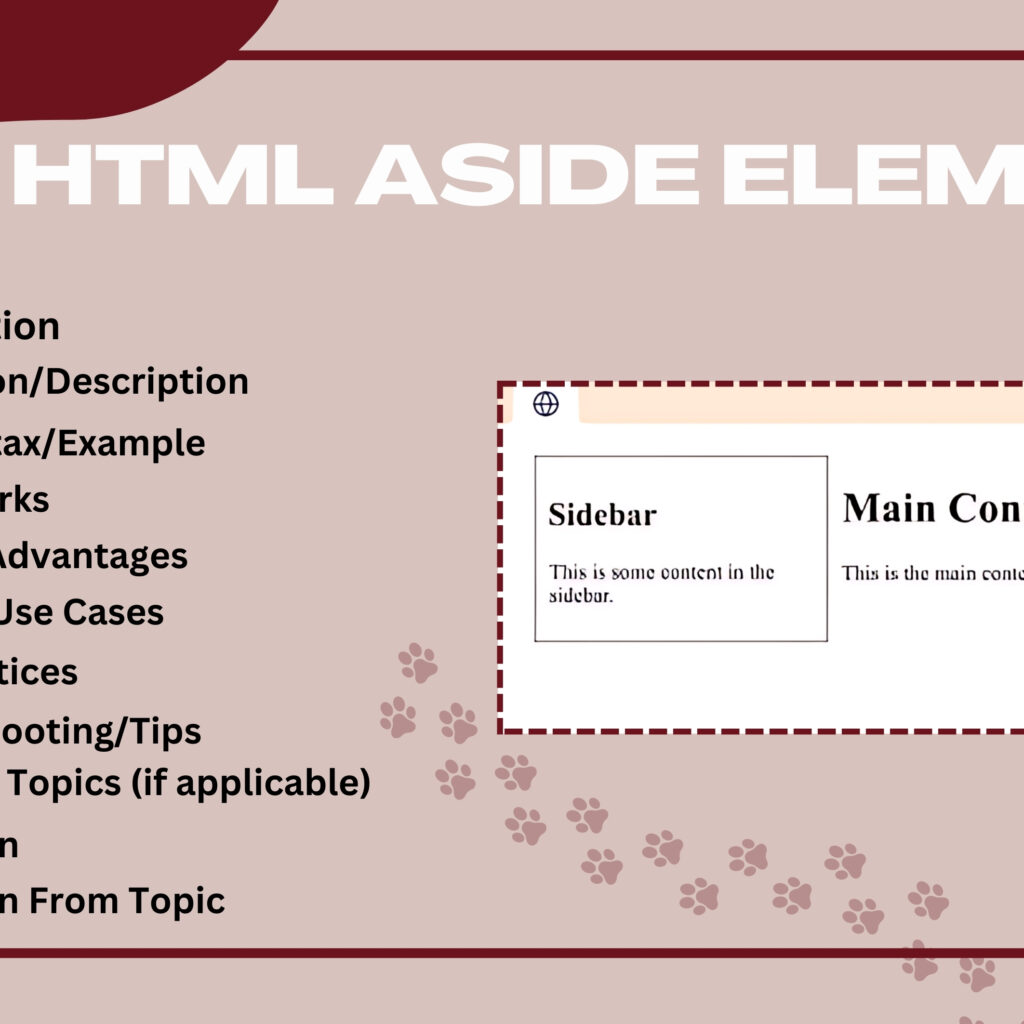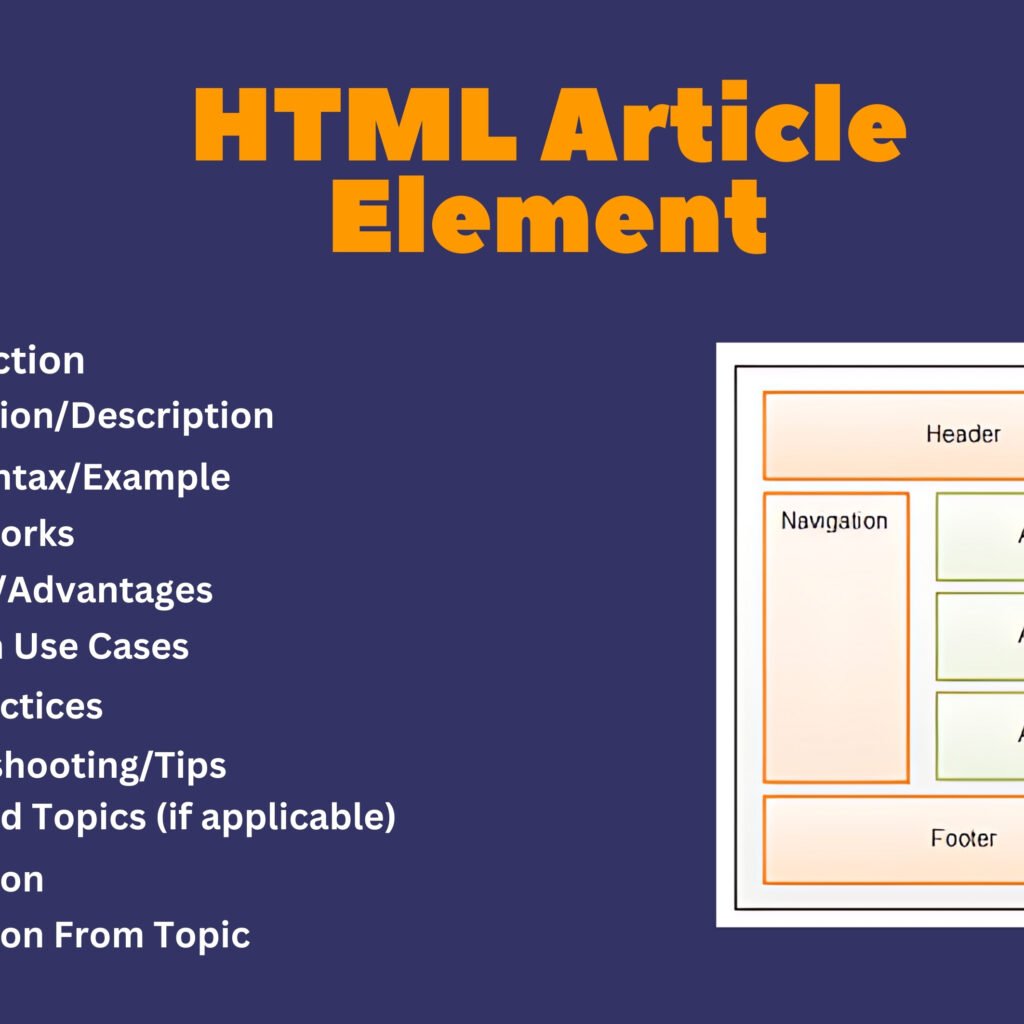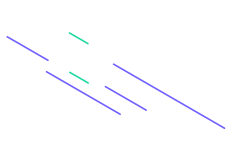
Introduction
The HTML <section> element represents a standalone section of content within a document. It is typically used to group related content together, enhancing the semantic structure and improving readability and accessibility.
Explanation/Description
The <section> element is designed to wrap content that forms a distinct, self-contained section of a document. This could include a group of thematic content, a chapter, or a grouping of related articles. The <section> element can contain headings, paragraphs, images, and other elements.
Basic Syntax/Example
<!DOCTYPE html>
<html>
<head>
<title>Section Element Example</title>
</head>
<body>
<header>
<h1>My Website</h1>
<nav>
<ul>
<li><a href="#home">Home</a></li>
<li><a href="#about">About</a></li>
<li><a href="#services">Services</a></li>
<li><a href="#contact">Contact</a></li>
</ul>
</nav>
</header>
<main>
<section id="home">
<h2>Home</h2>
<p>Welcome to my website.</p>
</section>
<section id="about">
<h2>About</h2>
<p>Learn more about us.</p>
</section>
<section id="services">
<h2>Services</h2>
<p>Discover our services.</p>
</section>
<section id="contact">
<h2>Contact</h2>
<p>Get in touch with us.</p>
</section>
</main>
<footer>
<p>© 2024 My Website. All rights reserved.</p>
</footer>
</body>
</html>
In this example:
- The
<section>elements group content into distinct, thematic areas such as Home, About, Services, and Contact. - Each section contains a heading and relevant content, providing a clear structure to the document.
How It Works
- Block-Level Element: The
<section>element is a block-level element, meaning it starts on a new line and takes up the full width available. - Contains Thematic Content: It groups related content together, making it easier to navigate and understand.
- Semantic Role: Provides a semantic role to the content it wraps, helping search engines and assistive technologies interpret the document structure.
Benefits/Advantages
- Semantic Clarity: Clearly defines sections of related content, enhancing the semantic structure of the document.
- Improved Accessibility: Helps screen readers and other assistive technologies navigate the content more effectively.
- SEO Benefits: Assists search engines in understanding the layout and content hierarchy, which can improve SEO.
Common Use Cases
- Content Grouping: Grouping related content, such as different topics, articles, or chapters.
- Page Sections: Defining different sections of a web page, like the main content, sidebar, and footer.
- Blog Posts: Wrapping different sections of a blog post, such as the introduction, body, and conclusion.
Best Practices
- Use with Headings: Always use headings (
<h1>to<h6>) within<section>elements to define the section’s purpose. - Consistent Use: Use
<section>consistently across your site to maintain a clear and logical structure. - Avoid Overuse: Do not use
<section>for every grouping of content; use it when the content forms a distinct and standalone thematic group.
Troubleshooting/Tips
- Validate HTML: Use HTML validators to check for proper use of the
<section>element and fix any issues. - Check Readability: Ensure the content within
<section>elements is logically grouped and easy to read. - Test Accessibility: Use screen readers to test the accessibility of the content and ensure it enhances the user experience.
Advanced Topics (if applicable)
- Nested Sections: Use nested
<section>elements to create a deeper hierarchical structure when needed. - Styling Sections: Apply CSS to style different
<section>elements uniquely, enhancing the visual structure. - ARIA Roles: Use ARIA roles to provide additional semantic meaning and improve accessibility further.
Conclusion
The HTML <section> element is a versatile and powerful tool for structuring content on a web page. By using <section> effectively, developers can enhance the semantic clarity, readability, accessibility, and SEO of their web content.
Five Questions
- What is the primary purpose of the HTML
<section>element? - How does the
<section>element enhance the structure and accessibility of a web page? - What are some common use cases for using the
<section>element in HTML documents? - How can nested
<section>elements be used to create a hierarchical structure? - What are some best practices for ensuring the
<section>element is used effectively and semantically?




